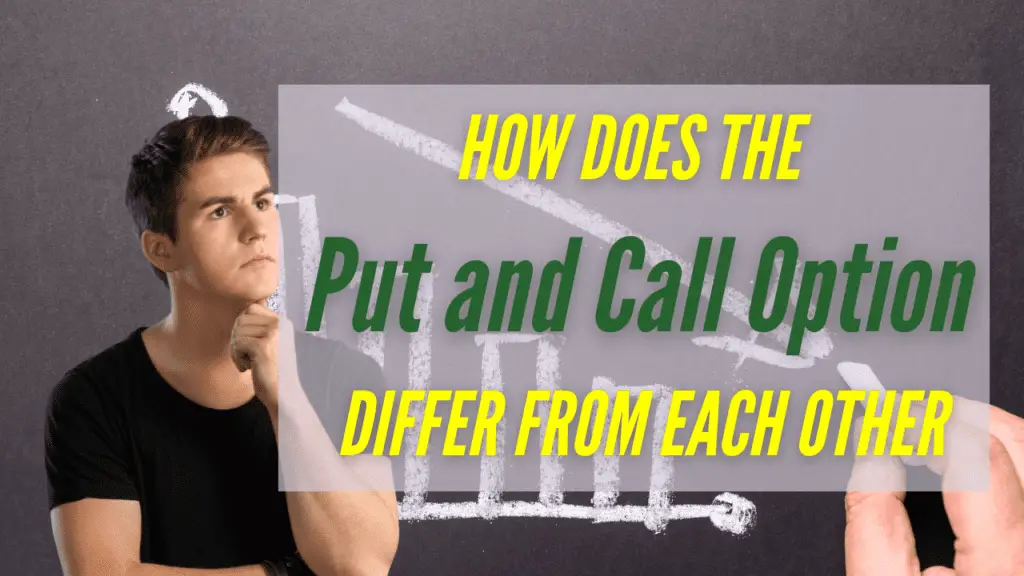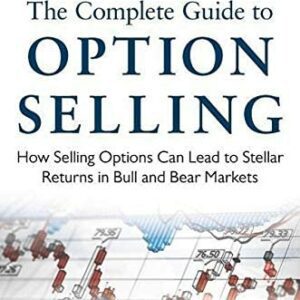The put and call option are one of the most instrumental pieces required in the financial world. These are financial instruments that represent a contract that has the buyer on one side and the seller on the other. This contract gives either party the option to buy or sell an underlying asset at a specified price. This is known as the strike price which is within a specified period of time.
Traders or investors use these two financial instruments to speculate on the price of an asset with a view to profiting from a rise in the price of the underlying asset. It is important to understand these two financial instruments, as they are very useful when it comes to options trading. In this article, we will learn more about the put and call options and their differences. Most importantly, how you can potentially make money off of it.
What are the call options and put options?
An option refers to an agreement between two parties, to buy or sell an underlying asset for a specific price at a point in the future. While the call option gives a buyer the right to buy an asset at a pre-determined price. The put option gives the buyer the right to sell the asset at a specific price. This contract often has a defined length of time that the two parties agree to when they sign it.
The two parties enter into the contract with the intention to follow the underlying asset’s price movement until the expiry date. As a result, the buyer of a call option expects the price of the underlying asset to increase. While the buyer of a put option anticipates a decrease in price. It is crucial to understand that the cost of the call and put options directly relates to the prices of the corresponding strike prices. The price at which an options contract can be executed is known as the striking price.
How do they both work?
In terms of valuing an option contract, it is all about determining the probabilities of future price events. Options are based on the underlying asset’s price, time to maturity, volatility of the asset, and many other similar factors.
The basic strategy is to buy a call option if you expect the price of the underlying asset to rise. Whereas if you expect it to fall, you would buy a put option. A call option is a financial instrument that gives the holder the right to buy an underlying asset at a particular price on a specified date. This particular price is known as the strike price. The holder of a call option has the right to exercise the contract at the expiration date.
Whereas the put option holder is having the right to sell an underlying asset at a pre-determined price on expiration. It is crucial to note that options provide rights and not the obligation to buy or sell an underlying asset.
In addition, traders or investors can trade in options on various platforms that give flexible and user-friendly trading interfaces. Therefore, careful research and analysis should be conducted before entering into a contract.
Similarities of the call and put option?
Both the call and put options are similar in way that they give the holder the option to buy or sell an underlying asset at a specified price for a specified period of time. Following are a few of the similarities between the call and put options:
Premium Paid
When buying a call option or a put option, the premium is paid by both the buyer and the seller. This is referred to as an upfront premium. Due to the fact that it must be paid before either party can exercise their respective rights. This amount is frequently referred to as a “premium.” Without any leverage in either party’s favor, the buyer and seller are both required to pay the upfront premium.
The losses
The maximum loss that both the buyer and seller of an option can incur is the premium they have paid. The call option and put option are considered to be financial instruments that give its holder flexibility to reap profit or lose their investment. The entire premium paid by both the buyer and the seller at the time of entering into a contract typically serves as a cap on the greatest loss.
Date of Expiration
The key element in both the call and put options is time. The expiration date of a call option or put option defines when the buyer or seller has the right to exercise their respective rights. If the contract is not settled within the expiration date. The parties may cancel the transaction, which may result in an invalid contract. Therefore, it is important to note that both these parties are avoiding exposure to risk beyond the expiration date.
Derivatives
Lastly, both options are considered to be complex derivatives that are implemented by using an underlying asset. The basis of any derivative is the underlying asset and this is the same case for options.
Differences between call and put options based on different situations
When it comes to the difference between the call and put options based on different situations, some of the major differences include:
Buyer’s perspective
The perception of the future price of an underlying asset is crucial in both the call options and put options. They have to determine whether they expect the price to rise or fall before entering into a contract. The rise in the price of an underlying asset is ideal for buying a call option as the buyer would want to buy the underlying asset at a lower price and sell it after holding on for some time to gain a profit. However, if the price of the underlying asset falls, selling an option is ideal. Overall, the perception of buyers makes them decide whether to purchase a call or put option.
Expiration
The duration of the life of a contract is known as the expiration date, which is the date after which the option becomes invalid and either party has to exercise their respective rights to trade in an underlying asset. The time period or the duration of the expiry date is different for call and put options and the date will vary based on the type of options contract.
Strike Price
The strike price is the price at which the buyer of a call option has the right to exercise their respective rights. Whereas for the strike price of a put option is the price at which the seller has to buy an underlying asset. The strike price of both options is usually provided by the broker and is dependent on the type of underlying asset. It varies depending on some factors and is different for every option.
Risk
Options are considered to be financial instruments that give their holders the option to make a profit or loss. However, due to the volatility and fluctuation of underlying assets, the risk associated with options is always high. The maximum risk, however, is the total premium paid. At the same time, the level of risk for both call and put options varies and differs based on the underlying asset.
Profit
The profit a trader can make with either call or put options is dependent on the price at which they have to buy or sell an underlying asset. This can be calculated by both taking the difference between the current price and strike price of the underlying asset and multiplying it with the number of underlying assets. The profit varies with the movement of the derivative market.
How does option premium work?
Now that we have an idea of both call and put options, we will look at the concept of option premiums. The premium is the price that traders are willing to pay for a call or put option. The price paid to obtain the right to buy or sell any asset is known as the option premium. Option premium includes extrinsic and time value for out-of-the-money contracts and both intrinsic and extrinsic value for in-the-money options.
The premium of options will usually be greater given more time to expiration or greater implied volatility. As such, the premium depends on two factors, the underlying asset and the amount of time left in the contract. Therefore, the more time at expiry, the more the option premium will increase.
How to Maximise the Premium you are getting
There are a number of ways to maximize your returns on call and put options. Firstly, selling LEAPS (Long-Term Equity Anticipation Securities) which are options with expiration longer than 1 year. As the future of a company remains unknown, the option premium would be higher.
Secondly, trade stock options that are more volatile such as Tesla or any Crypto investment. Even though this investment provide higher returns, it is generally avoided as the payoff is not worth the risk.
Lastly, if you are looking to buy or sell options, having the option trade near in the money would provide a good amount of returns. This is a strategy often used by financial institutions and large investors as they are willing to buy or sell shares of the company while being paid a premium.
Conclusion
To sum up, there are many similarities and differences between call and put options. To understand these contracts, traders should conduct thorough research on both contracts and study the terminology used when describing the contracts. The better the trader understands these contracts, the greater their chances of making a profit from the derivatives market. The profit that can be made from either call or put options largely depend on the price of the underlying asset and its movement.
If you would like to start trading options or would like to know how to make money trading options. Do check out the article on how I make money trading options.
Q&A on call and put option
Apart from understanding the importance of a call and put option, it is important to add a Q&A to clarify any doubt. This section is important to share some light on the options trading strategy for people to understand.
Which option is the better one to use
Trading options largely depend on the amount of research you have done for a certain company and how much conviction you have for it. However, do note that 80% of options expire worthless, so technically selling puts and calls may be a good strategy. If you would like to learn more about selling options, I highly recommend you read this book.
How should I start learning Options?
Options trading does require a lot of technical skills and knowledge to safely execute a good trade. This is why options trading should not be recommended to people with low capital. 1 mistake may cause large damage financially to your portfolio. Therefore, all first-time options traders should start by trading on a paper account until they are comfortable trading options without getting too emotional. Do read my beginner guide on how to trade options to get more clarity on options trading.
Is trading option a good side hustle?
Yes, trading options are one of the best side hustles if you are an investor with a decent sum of money in your portfolio. Here are a few benefits of trading options
- Calling it passive income is an understatement (doesn’t require much maintenance if you have already put in enough upfront work)
- Can be done anywhere, all you need is a laptop or mobile phone
- Wheeling the options premium will compound over time






